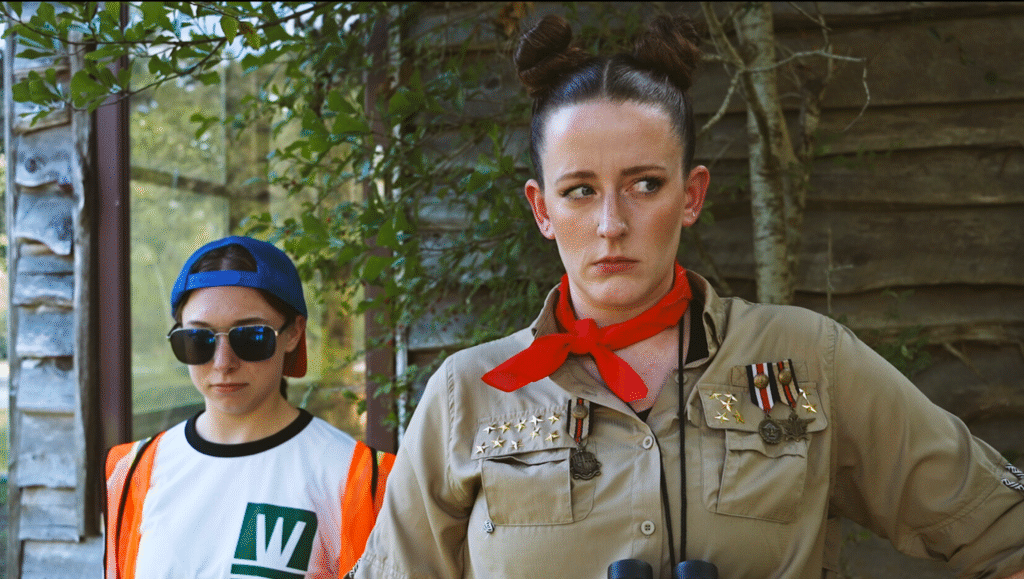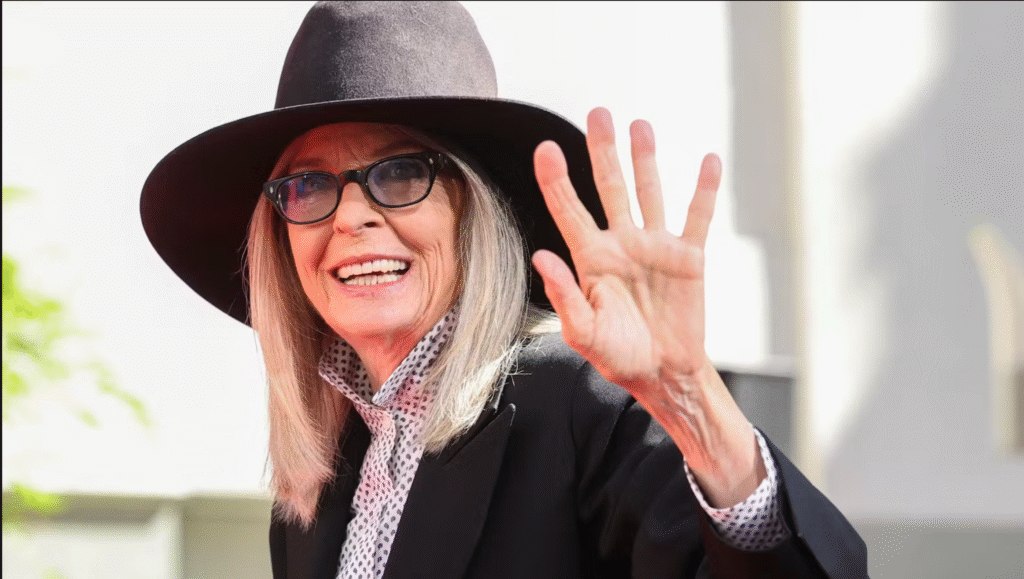Entertainment
Leah Remini Claims Church of Scientology ‘Stalked’ Her in New Lawsuit on August 2, 2023 at 7:48 pm Us Weekly

Leah Remini Erik Pendzich/Shutterstock
Leah Remini is attempting to take back her power by filing a lawsuit against the Church of Scientology for allegedly trying to “destroy” her life.
“For the past 10 years, Ms. Remini has been stalked, surveilled, harassed, threatened, intimidated,” Remini alleged in court documents obtained by Us Weekly on Wednesday, August 2. “Moreover, [she] has been the victim of intentional malicious and fraudulent rumors via hundreds of Scientology-controlled and coordinated social media accounts.”
The King of Queens alum, 53, argued in her filing that the heads of Scientology created a “campaign to ruin and destroy [her] life and livelihood” after Remini was “deemed a Suppressive Person” following her 2013 exit from the church.
The choice to leave Scientology — and speak out against the church — led to Remini being “declared Fair Game,” according to the docs. Scientology’s Fair Game directives are allegedly to make sure a Suppressive Person is “silenced by whatever means necessary,” that includes damaging “the person’s professional reputation, [filing] frivolous lawsuits and [orders to] harass and surveil ‘the enemy’.”
Remini claimed in her lawsuit that the church also targeted her loved ones. “Defendants have also incessantly harassed, threatened, intimidated, and embarrassed Ms. Remini’s family members, friends, colleagues and business associates,” she alleged, adding that the church’s actions caused Remini to “lose personal relationships” and “business opportunities.”
Remini explained her reason for filing the lawsuit as an attempt to “recover compensatory and punitive damages for the enormous economic and physiological harm” that she claims the church has “inflicted upon her” through an “unlawful campaign of harassment and intimidation.”
Remini joined the controversial religion when she was just 8 years old after her mother converted. She walked away from Scientology in 2013 and has since slammed the church for its practices and alleged protection of sexual predators.
She has also shined a light on the disappearance of Scientology leader David Miscavige’s wife, Shelly, who has not been seen publicly since 2007. After Remini filed a missing person’s report in 2013, the media relations at the Church of Scientology released to Us, claiming, “The Los Angeles Police Department has already stated that the case is closed and that the report filed by Leah Remini was unfounded.”
Remini has also released a tell-all book about her time as a Scientologist and spoken out about the organization’s alleged indiscretions on A&E’s Scientology and the Aftermath docuseries.
In her Wednesday court filing, Remini claimed that her vocal statements about the church over the years have made her a target.
Remini alleged in the lawsuit that Scientology’s smear campaign against her has led to “significant and ongoing economic harm.” Remini claimed that she’s spent “nearly 10 years of her life under constant threat and assault by Defendants as a result of her public departure” from the religious group.
Broadimage/Shutterstock
Remini explained her lawsuit in more detail via her website on Wednesday, writing, “After 17 years of harassment, intimidation, surveillance, and defamation, I am filing a lawsuit against Scientology and David Miscavige.”
She concluded: “While advocating for victims of Scientology has significantly impacted my life and career, Scientology’s final objective of silencing me has not been achieved. While this lawsuit is about what Scientology has done to me, I am one of thousands of targets of Scientology over the past seven decades. People who share what they’ve experienced in Scientology, and those who tell their stories and advocate for them, should be free to do so without fearing retaliation from a cult with tax exemption and billions in assets.”
Remini argued, “the press has a right to report about Scientology without facing a sophisticated intelligence operation from Scientology to destroy their personal lives and their careers. Law enforcement authorities have a right to investigate crimes in Scientology without fear that they will lose their jobs.”
She concluded: “With this lawsuit, I hope to protect the rights afforded to them and me by the Constitution of the United States to speak the truth and report the facts about Scientology without fear of vicious and vindictive retribution, of which most have no way to fight back.”
Leah Remini is attempting to take back her power by filing a lawsuit against the Church of Scientology for allegedly trying to “destroy” her life. “For the past 10 years, Ms. Remini has been stalked, surveilled, harassed, threatened, intimidated,” Remini alleged in court documents obtained by Us Weekly on Wednesday, August 2. “Moreover, [she] has
Us Weekly Read More
Entertainment
California Bans AI Clones from Replacing Real Talent

California just made a dramatic stand for human creativity, defeating the threat of AI actor clones with a sweeping new law that puts people—not algorithms—back in the Hollywood spotlight. With the stroke of Governor Gavin Newsom’s pen in October 2025, the state has sent a clear message to studios, tech companies, and the world: entertainment’s heart belongs to those who create and perform, not to digital facsimiles.
California Draws a Hard Line: No More AI Clones
For months, the entertainment industry has been divided over the use of artificial intelligence in filmmaking. Studios, lured by promises of cost-cutting and creative flexibility, have invested in software that can mimic an actor’s face, voice, and even emotional range. But for performers, this wave of synthetic reproduction has triggered alarm—encouraged by chilling stories of deepfakes, unauthorized digital doubles, and contracts that let studios reuse a star’s likeness indefinitely, sometimes without pay or approval.
The new California law, anchored by AB 2602 and AB 1836, changes everything:
- Every contract must explicitly detail how studios can use digital replicas or voice models, preventing once-common “blank check” agreements that overlooked this risk.
- No one—not studios nor streaming giants—can create or release AI-generated clones of an actor, living or dead, without clear, written consent from the performer or their estate.
- The law gives families new powers to defend loved ones from posthumous deepfake exploitation, closing painful loopholes that once let virtual versions of late icons appear in new ads, films, or games.
Actors Celebrate a Major Victory
The legislation rides the momentum of the recent SAG-AFTRA strike, where real-life talent demanded control over their own digital destinies. Leaders say these protections will empower artists to negotiate fair contracts and refuse participation in projects that cross ethical lines, restoring dignity and choice in an industry threatened by silent algorithms.
Stars, unions, and advocacy groups are hailing the law as the most robust defense yet against unwanted AI replications.
As one actor put it, “This isn’t just about money—it’s about identity, legacy, and respect for real artists in a synthetic age.”
A New Chapter for the Entertainment Industry
California’s move isn’t just a victory for local talent—it’s a warning shot to studios everywhere. Companies will now be forced to rethink production pipelines, consult legal counsel, and obtain proper clearance before digitally cloning anyone. Global entertainment platforms and tech developers will need to comply if they want to do business in the world’s entertainment capital.

These laws also set a template likely to ripple through other creative fields, from musicians whose voices can be synthesized to writers whose work could be mimicked by generative AI. For now, California performers finally have a powerful shield, ready to fight for the right to shape their own public image.
Conclusion: Human Talent Takes Center Stage
With its no-nonsense ban on AI actor clones, California draws a bold line, championing the work, likeness, and very humanity of its creative stars. It’s a landmark step that forces the entertainment industry to choose: respect real talent, or face real consequences. The age of the consentless digital double is over—human performers remain the true source of Hollywood magic.
Entertainment
Chaos and Comedy: Darby Kingman’s “Camp Wackapoo: Rise of Glog”

Darby Kingman’s “Camp Wackapoo: Rise of Glog” redefines summer camp comedy with a wild, energetic story about ambition, chaos, and the joy of embracing the unexpected. The film centers on a relentlessly competitive camp counselor who’s determined to finish first—only to face a motley crew of unruly campers and a summer unlike any other.
As Darby puts it, “Not everything is that deep. It really honestly was to make people laugh. She has all these kids that are not working with her and she’s just losing her mind. It’s crazy, silly, goofy, and it was a blast.”
What started as a simple scene for Darby’s acting reel evolved into a full-fledged film with encouragement from her mentor at Debbie Reynolds Acting School. Darby dove into every role—writing, directing, starring, and meticulously preparing each prop and costume. “Plan and prepare, but also be flexible and ready to be in the moment—that’s when the magic happens,” she advises.
Working with a handpicked cast of her own dance students, Darby built an atmosphere of real teamwork and camaraderie. She credits the “precious” energy of her young cast, her creative director of photography, and the overall spirit of her production team for turning the project into something bigger than herself. Her experience is an inspiring blueprint for indie filmmakers:
“Take initiative and control of your career. You can’t just sit around and wait for somebody to pick you. Figure out what you’re good at and go for it. Create something that brings joy to others.”

Her production motto? “Preparation is key, but you have to be ready to go with the flow—that’s when the magic happens.” Darby’s fearless creativity, focus on collaboration, and love for comedy shine throughout “Camp Wackapoo: Rise of Glog.” It’s more than just a camp satire—it’s a heartfelt testament to hard work, original humor, and leadership from the ground up: “People need to laugh right now. That’s a win.”
Catch “Camp Wackapoo: Rise of Glog” and experience Darby’s infectious energy and comic genius at the Deluxe Theatre on November 1, 2025. Get your tickets now at Houstoncomedyfilmfestival.com.
Entertainment
Diane Keaton Dies at 79

The world of film and entertainment is mourning the loss of Diane Keaton, an Oscar-winning actress renowned for her enduring talent, individuality, and influence on generations of performers and fans. Keaton died at the age of 79 in California on Saturday, October 11, 2025, her family confirmed. Details remain private, with her family requesting privacy as they grieve this profound loss.

A Distinctive Talent
Diane Keaton rose to fame in the 1970s through a series of memorable roles, most notably as Kay Adams in “The Godfather” trilogy and as the quirky, unforgettable lead in Woody Allen’s “Annie Hall,” for which she won the Academy Award for Best Actress. Her performances in films like “The First Wives Club,” “Something’s Gotta Give,” and the “Book Club” series solidified her reputation as an actress with unique comedic timing and dramatic depth. Keaton was celebrated not only for her artistry but also for her androgynous fashion sense, characterized by menswear-inspired looks, hats, and an easy, effortless style that influenced generations.
Legacy and Tributes
Following the news of her passing, tributes poured in from Hollywood and beyond. Bette Midler, Goldie Hawn, and Jane Fonda were among the countless stars who expressed devastation and admiration for Keaton’s incomparable legacy. Hawn recalled their friendship and collaborations, writing: “Diane, we aren’t ready to lose you…you stole the hearts of the world and shared your genius with millions”. Midler echoed the sentiment, praising Keaton as “brilliant, beautiful, extraordinary” and a truly original presence in Hollywood.

Private Struggles and Final Months
Though fiercely independent and known for her openness, Keaton kept her declining health private in her final months. Friends and neighbors noticed her retreat from public life and social media, and she was recently seen less often in her Brentwood neighborhood. In the past, Keaton candidly discussed her ongoing battles with skin cancer and bulimia, openly advocating for personal health and authenticity.
Remembering Diane Keaton
Diane Keaton leaves behind a legacy defined by her fearless performances, unique style, and enduring influence on the arts. She is survived by her two children, Dexter and Duke. As Hollywood and her global fanbase mourn, her pioneering spirit and unmistakable voice will continue to inspire generations.

 Business3 weeks ago
Business3 weeks agoDisney Loses $3.87 Billion as Subscription Cancellations Surge After Kimmel Suspension

 Entertainment3 weeks ago
Entertainment3 weeks agoWhat the Deletion Frenzy Reveals in the David and Celeste Tragedy

 Entertainment4 weeks ago
Entertainment4 weeks agoABC Suspends ‘Jimmy Kimmel Live!’ Indefinitely After Kirk Remarks

 Entertainment3 weeks ago
Entertainment3 weeks agoExecutive Producer Debut: How Celia Carver Created Festival Hit ‘Afterparty’

 Film Industry4 weeks ago
Film Industry4 weeks agoCan Movie Theaters Steal the Show from Streaming?

 Health3 weeks ago
Health3 weeks agoRussia Claims 100% Success With New mRNA Cancer Vaccine

 News4 weeks ago
News4 weeks agoBody of Missing Teen Found in Tesla Linked to Musician D4vd

 Business4 weeks ago
Business4 weeks agoWhy Small Theaters Are Thriving While the Industry Struggles





























